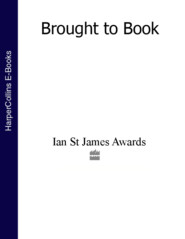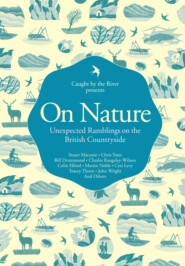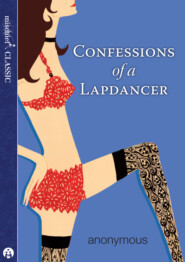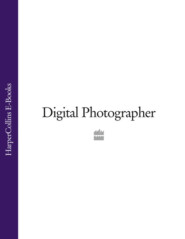По всем вопросам обращайтесь на: info@litportal.ru
(©) 2003-2025.
✖
In God’s Hands: The Spiritual Diaries of Pope St John Paul II
Автор
Год написания книги
2019
Настройки чтения
Размер шрифта
Высота строк
Поля
Talk 8: (De Beata [On the Blessed One])
(a) s. Bernardus: totus mundus exspectat responsum Mariae – ecce ancilla Domini [St Bernard: the whole world expects Mary’s response – She is the handmaid of the Lord]:
Through these words Mary became the Mother of our reconciliation with God – through these words uttered in Nazareth, and repeated under the cross. God reconciled the world in Christ through the mediation of Mary.
(b) Mary reveals Her Immaculate Conception when – while a new world is being born, a new world full of wars – She comes to reconcile people with God.
We must help Her with this, work with Her. What would have happened if Mary had said ‘no’? What would have happened if Fr Maksymilian had said ‘no’?
(c) The three ‘aperi’ [‘open!’] of St Bernard.
The response of the heart open to faith – Mary’s faith was paid for dearly with Her sacrifice. Sacrifice is the implication of faith (cf. the analysis of the icon of Our Lady of Perpetual Help – in the East, ‘a terrible vision’) – only through this kind of faith can we become Mary’s assistants, like Fr Kolbe. Such faith reaches prophetic dimensions.
crede! [believe!]
Is this the answer of faith that I give to God every day, together with Mary?
(d) St Bernard: Mary’s lips are open to adore God: confitere! confess! The Mother of God is the Mother of brave confession. Evidence: Fr Kolbe.
Is the answer that I give to God every day an answer of faith, notwithstanding the circumstances, together with Mary?
(e) St Bernard: Suscipe! [Receive!]. Mary taught Fr Kolbe how to accept God through love. Mary heals us from our coldness (satan’s name – ‘coldness’) so that we can work with Her to reconcile people with God. An amazing ‘thank you’ of St Bernadette Soubirous.
(f) The nation, world, Church and heaven await our – Polish bishops’ – constant answer, ‘yes’ uttered with Mary. The future depends on this and nothing else. Amen.
Magnificat; Act of Consecration to Our Lady (Primate); Benediction with the Blessed Sacrament
Major Council of the Bishops’ Conference in the afternoon
Breviary; Adoration; Rosary
7 September
Concluding meditation: In order to respond ‘yes’ to God with the Most Holy Mother, one has to be a sign of Christ through prayer (breviary), celebrating the Eucharist, the spirituality of expectation, solemnity of authority, verbal service, the spirit of penance …
Deo gratias! [Thanks be to God!]
4–8 July 1975 (#ulink_741dcad8-d7b9-56c8-a46e-8869c5b7e05b) Retreat at Bachledówka
4 July: Anniversary of the Cathedral’s Consecration
(First Friday): preparation of the ‘material’, arrival at Bachledówka about 9.00 p.m.
Adoration of the Blessed Sacrament; Compline
5 July
Morning prayers; (First Saturday) Introductory meditation 1, in which the following topic emerges: Creator – Judge – God and Father of our Lord Jesus Christ
First reading; Lauds; Holy Mass; Thanksgiving
Reading: Analecta Cracov. 1975: ‘Nowa interpretacja dogmatów’
Rosary (petitions); Prayer to the Holy Spirit
Morning meditation 2: ‘I thank Thee, Father, Creator (Lord) of heaven and earth, that Thou hast hidden these things from the great and revealed them to babes’
– The truth about creation and the truth about God as the Creator is the first step the human mind takes towards God. This first step seems very difficult to many people today due to certain cognitive assumptions that have developed in the modern understanding of the world. This understanding is devoid of transcendence. ‘The great’ in a way become the slaves of such an understanding. In the same reality, ‘babes’ discover being, beauty, goodness, coincidence, creativeness – all that St Thomas so successfully described in an objective way. Man indispensably needs this first step through the visible creation (the world) towards the invisible Creator (compare Wisdom, Romans).
The discovery of the Creator is not only the belief in the First Cause, which is Esse Subsistens [Being Itself]. It is also – and first and foremost – the discovery of love. To create means not only to reveal power, omnipotence that surpasses all, but also it means: to give being, existence and goodness, therefore – to love!
The Way of the Cross: In quam verba Mariae vel de Maria introducuntur (XII: Misit Deus Filium suum natum ex Muliere … Signum magnum apparuit … et verba e Magnificat, ex Annuntiatione) [In which Mary’s words or words about Mary are introduced (Station XII: God sent forth His Son, born of woman … And a great portent appeared … and Mary’s words from the Magnificat, from the Annunciation)].
Meanwhile: Terce; Sext; None; Reading (as above)
Adoration: The Eucharist makes it possible for our life still to revolve around ‘the dimension of the living God’.
Vespers; Rosary; Petitionary prayer
Meditation 3: According to St John, man turns away from God, the Creator and Father, through concupiscence, which is not ‘of the Father’, but ‘of the world’.
It deprives us of true and full joy of creation and joy derived from creation. It diminishes the perspectives of experience.
I considered the entire issue of A.T.
against this background, trying thoroughly to understand it, and above all begging for the right steps. (To some extent also A.P.) and others, considered previously.
(Anticipated) Matins for Sunday after Holy Mass; Paul VI’s encyclical on joy
Concluding meditation of the day [Meditation 4]: Mary as the fullness of the Creator’s experience, the fullness of creation and one’s own creativeness: fecit mihi magna … [has done great things for me].
Because the fullness of creation is grace: God wishes to create, but He even more wishes to create ‘things’, to give Himself personally. Mary is the one who is the most open to it. Mary teaches us openness to God’s work. Let us imitate her without failure!
The Jasna Góra Appeal; Compline (after reading)
6 July
Morning prayers; Intention; In relation to the Divine Presence (the beginning of the meditation): God and Father of Our Lord Jesus Christ
Lauds; Holy Mass; Thanksgiving; Rosary
Reading: the journal Analecta Cracoviensia
Prayer to the Holy Spirit
Meditation 5: Further contemplation of the Creator’s mystery concentrates on the creation of the human being, who is made in the image and likeness of God. Awareness and freedom, hence also conscience, enter the world of visible creatures. God–Creator reveals Himself as God–Judge through conscience. We will discuss this theme of the retreat later. One needs to enter more deeply into the dynamism of creation, which is revealed together with the creation of man. Proto-evangelium (Genesis 1–3) has to be interpreted more fully.
The essence of the mystery of creation does not consist only in creation out of nothing. It is present more fully in givenness: Existence is a gift – it becomes a gift in creation. And it reaches man as a gift. In him the act of creation signifies such dynamism of givenness on the part of the Creator that cannot be exhausted in existence, life or even spiritual likeness. Through all this and beside all this, God gives Himself to man in such a way that is possible only in friendship. The dynamism of creation leads to grace. At the same time, friendship attains the features of a covenant: There cannot be any friendship without certain expectations. Nevertheless, the created man remains in the fullness of the dynamism of givenness and enters the communion (communio) with God–man (Adam–Eve), and the communion entails a gift and mutual givenness. Sin – the breaking of the covenant – destroys this order. Concupiscence is in a way a renunciation of the gift.











